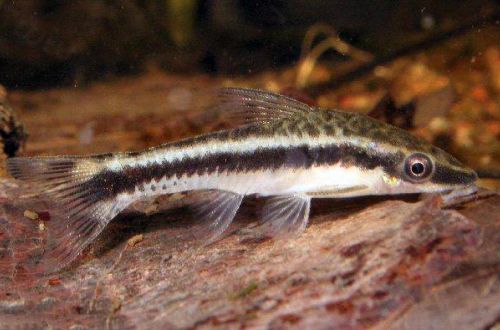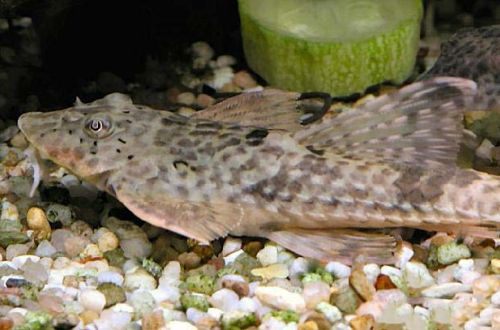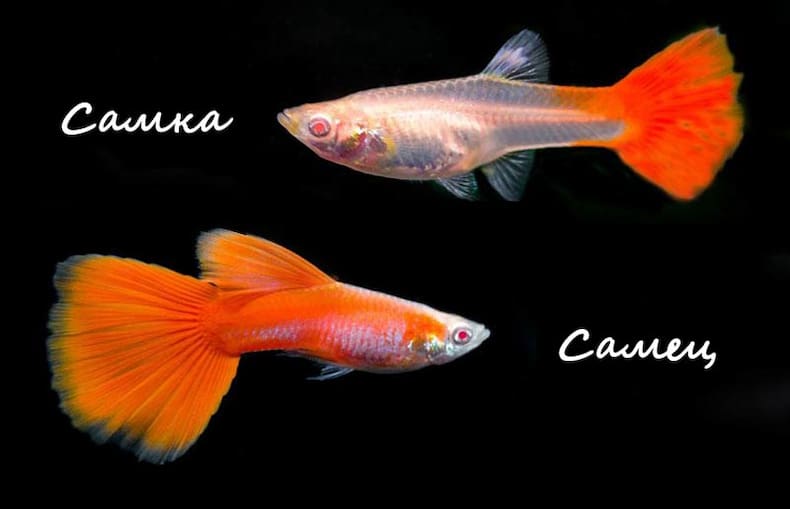
guppy albino
The albino guppy, scientific name Poecilia reticulata (a species of Albino), belongs to the Poeciliidae family. A characteristic feature is the absence of black pigment (melanin) in the color of the body and red eyes. It is worth noting that albinos are not always white, the colors can be any and combine many colors and shades, therefore the designations “platinum”, “red”, etc. are additionally indicated in the name. The most popular breeds with large veil fins. Males are smaller, sleeker and more colorful than females.

Brief information:
- The volume of the aquarium – from 40 liters.
- Temperature – 17-28°C
- Value pH — 7.0–8.5
- Water hardness – soft to high (10-30 dGH)
- Substrate type – any
- Lighting – moderate or bright
- Brackish water is permissible in a concentration of up to 15 g per 1 liter
- Water movement – light or moderate
- The size of the fish is 3–6 cm.
- Food – any food
- Temperament – peaceful
- Content alone, in pairs or in a group
Maintenance and care
It is considered unpretentious and hardy fish. Able to live in small unheated aquariums with minimal design. Successful long-term keeping depends on maintaining high water quality, a balanced diet and the right choice of neighbors.
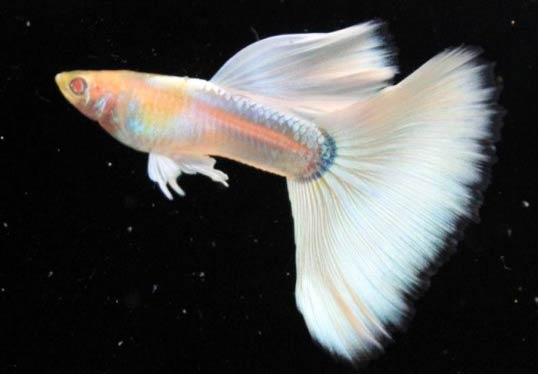
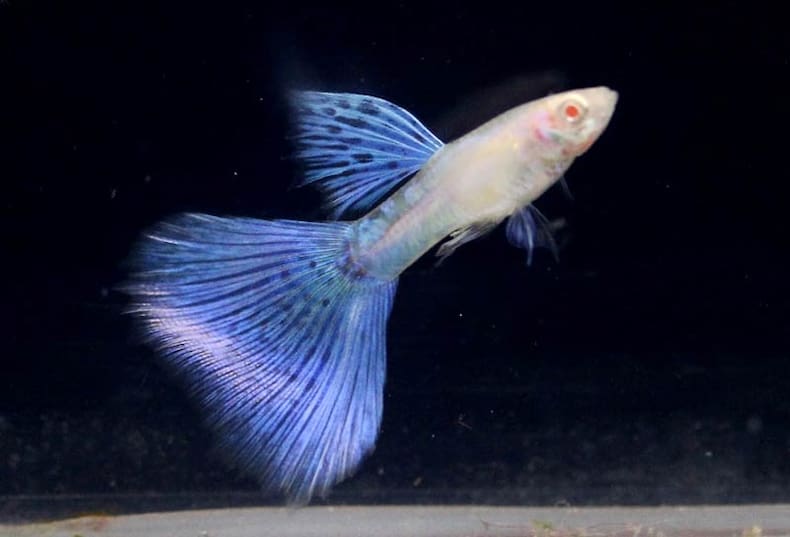
Weekly replacement of part of the water with fresh water, timely removal of organic waste (feed residues, excrement) and uninterrupted operation of the filtration system will be the key to a stable aquatic environment. In spacious tanks with a small number of inhabitants, a filter can be dispensed with, subject to regular maintenance.
In the presence of a sexually mature male and female, fry will appear regularly. In order to protect the offspring that have appeared, it should be moved to a separate aquarium in order to avoid predation by adult fish. Usually, fry hide in thickets of plants and avoid a dangerous encounter, but Albino Guppies have poor eyesight (lack of melanin), especially at a young age, and they cannot find shelter.
Food. Foods that stimulate the coloring of fish are recommended. The basis of the daily diet can be dry foods in the form of flakes, granules, tablets, as well as live or frozen brine shrimp, bloodworms, daphnia, mosquito larvae, etc.
behavior and compatibility. They prefer to be in groups, but they are not gregarious species. May be kept singly or in pairs. Compatible with many other fish of comparable size and temperament. It is undesirable to settle together with overly active species and those who are inclined to bite off other people’s fins, for example, some barbs. Coexistence with other Guppy breeds will potentially result in hybrid offspring.



